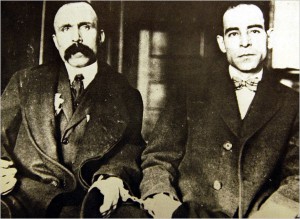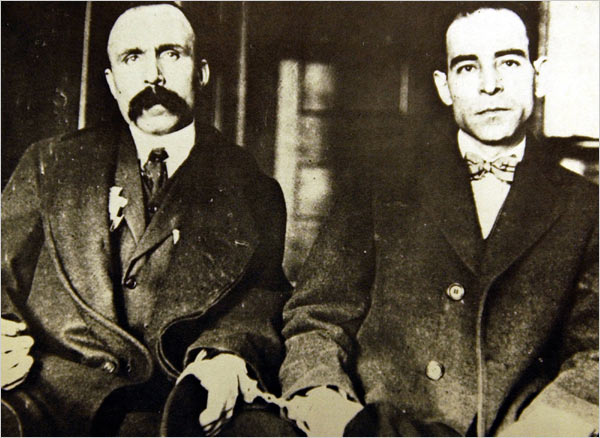 To Horace Meyer Kallen
To Horace Meyer Kallen
C/o Brown Shipley & Co
123, Pall Mall, London, S.W.1
Rome. October 22, 1928
Dear Kallen,
The proof of the Sacco & Vanzetti letters1 hasn’t yet reached me, but I can say beforehand that it is out of the question for me to “sponsor” them or to join the committee which you wish to form. Need I give any reasons? I think, if you transfer yourself mentally to my haunts in Rome and forget the agitations which surround you, you will be able to guess them. In fact, I am a little surprised that you shouldn’t have felt at once that I was not the right sort of person for such a manifestation.
I don’t know whether those men were condemned for what, morally, wasn’t a crime, or whether they were innocent altogether: in any case, it was a scandal to put off their execution so long, and then to execute them. It shows the weakness, confusion, and occasional cruelty of a democratic government: it is more merciful to the condemned, and more deterrent to others, to execute them at once, as do my friends the Bolsheviks and the Fascists. But that, I imagine, is not what your book is intended to prove.
Yours sincerely G Santayana
1. The Letters of Sacco and Vanzetti, edited by Marion Denman Frankfurter and Gardner Jackson (New York: Viking Press, 1928). In 1927 Italian immigrants Nicola Sacco and Bartolomeo Vanzetti were characterized as anarchists and executed in the electric chair for a 1920 robbery and murder in Massachusetts.
From The Letters of George Santayana: Book Four, 1928–1932. Cambridge, MA: The MIT Press, 2003.
Location of manuscript: American Jewish Archives, Hebrew Union College-Jewish Institute of Religion, Cincinnati OH
